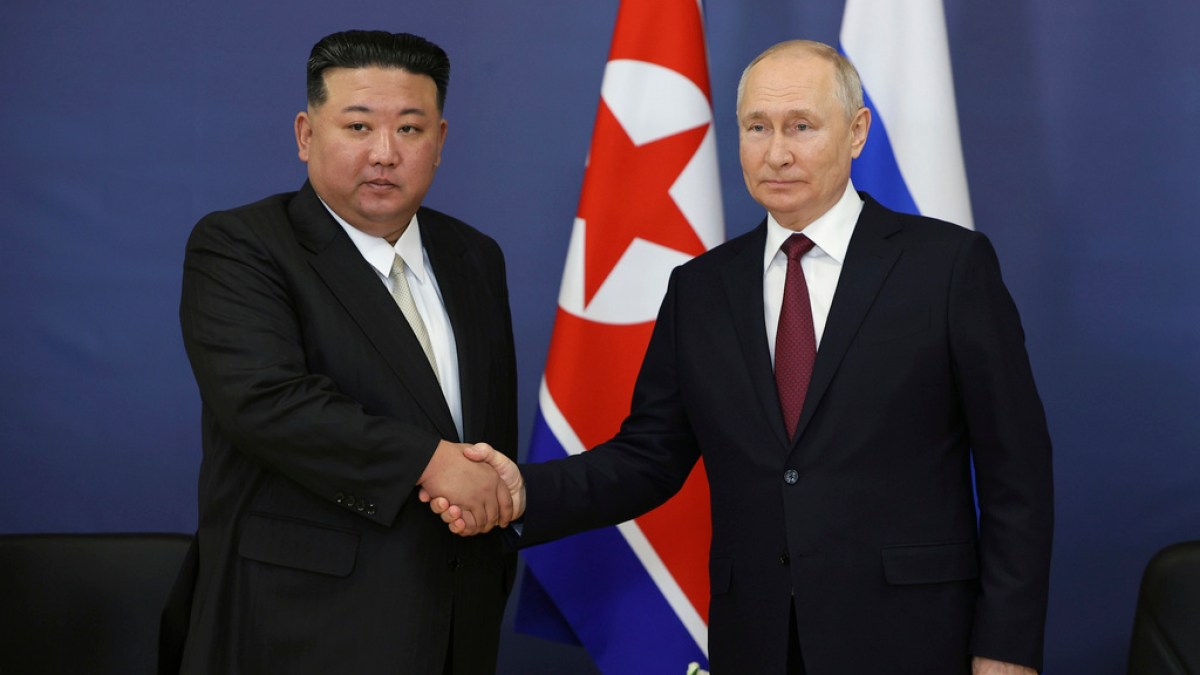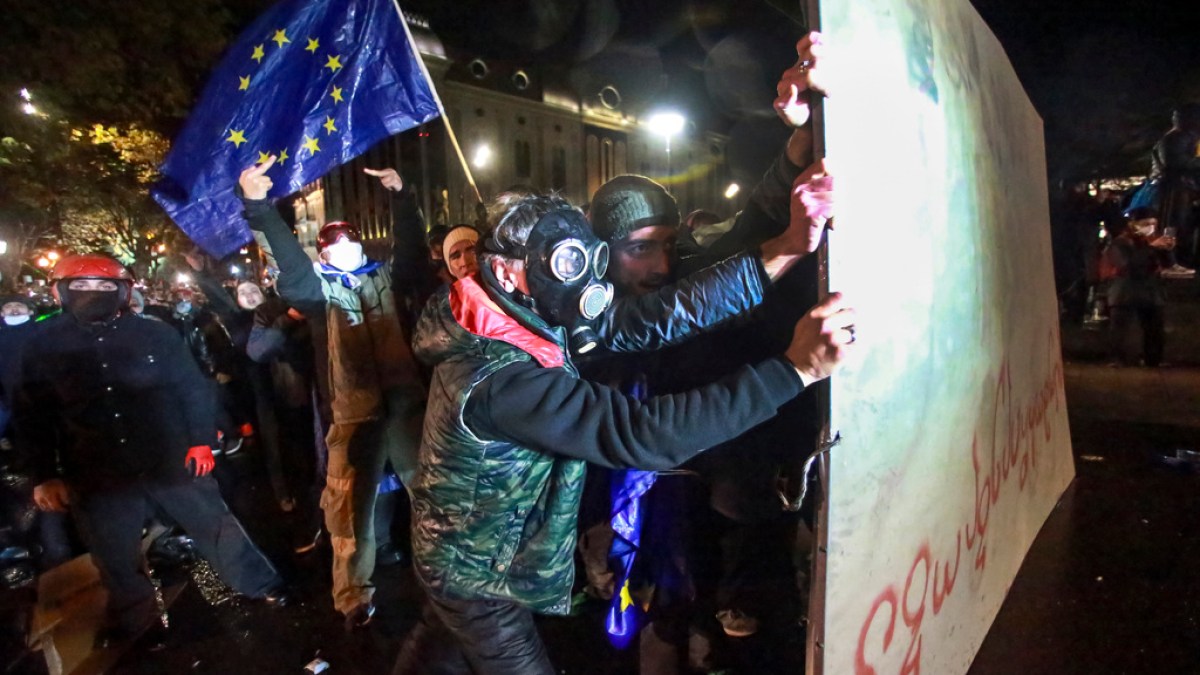

After 54 years in power, the al-Assad family’s rule in Syria has come to an end. On December 8, Bashar al-Assad fled the country and sought asylum in Russia. The collapse of one of the most brutal regimes in the modern history of the Middle East came after just 12 days of fighting between the Syrian army and a coalition of opposition forces, and put an end to the 13-year Syrian civil war.
The Syrian conflict took the lives of more than 350,000 Syrians and displaced at least 13 million. Brutal repression by the al-Assad regime turned a peaceful revolution into an internationalised civil war with Russia, Iran, Turkiye and the United States as the key players.
Its collapse will inevitably rearrange the geopolitical map of the region.
Syria’s decades-long alliances
Syria established diplomatic relationship with the Soviet Union in 1944 and became the first Arab country to buy Soviet-made arms a decade later. As other Arab countries, like Egypt, began moving away from the Soviet orbit in the 1970s, Hafez al-Assad’s regime in Syria remained a staunch Soviet ally.
Advertisement
Relations remained strong even after the collapse of the USSR as Russia retained its naval military base in Tartous. In 2004, Bashar al-Assad made his first state visit to Moscow in an attempt to revive the Cold War-era relationship and sought Russian assistance to modernise his army.
Similarly, Syria’s strong ties with Iran are decades old. In 1979, the two countries established an enduring alliance, driven by the shared animosity towards the regime of Iraqi President Saddam Hussein. The 2003 US invasion of Iraq gave the two countries one more reason to close ranks in order to block US attempts to destabilise them.
The devastation that the US left behind in Iraq and the 2006 Lebanon war played out in favour of Iran. The so-called “Shia Cresent” that stretched from western Afghanistan to the Mediterranean started to take shape and Syria was at the heart of it.
When the Arab Spring hit Syria in 2011, Iran rushed to support its ally. Tehran interpreted the Syrian revolution as an attempt by Turkiye and the Gulf states to undermine its regional influence. Pro-Iranian fighters, including members of Hezbollah, were dispatched to fight on behalf of al-Assad, whose army was plagued by desertion.
Iran also provided billions of dollars in financial aid and loans to support the Syria regime. When al-Assad was on the verge of collapse in 2015, Iran walked the extra mile and requested Russian support.
Moscow’s intervention helped turn the tide in favour of al-Assad as he battled opposition factions supported by the US, Turkiye and Gulf countries. It also helped establish a Russian military and diplomatic foothold, allowing the Kremlin to project power throughout the Arab world. Various state and non-state actors reached out to Russia, seeing it as a counterforce to US dominance or a possible source of leverage.
Advertisement
As al-Assad’s narrative equating the opposition with “terrorists” succeeded in turning public opinion in the US and the West in general, Western support for the opposition dwindled. Turkiye remained the sole foreign supporter and in 2017, it felt compelled to join the Russian-sponsored Astana format to negotiate a political solution of the conflict.
In the following years, al-Assad, backed by his Russian and Iranian allies, pushed to recapture more territory from the opposition, breaking various “de-escalation” agreements and ceasefires. By 2024, it looked as if Iran and Russia had succeeded in stabilising his regime and solidifying their own positions in the region. Arab and European states were starting to normalise relations with Damascus.
But an opposition offensive upended this regional balance of power within 12 days.
A changing geopolitical map
The rapid collapse of the Syrian army stunned Russia and Iran and they could not do much to help the crumbling al-Assad regime. During a meeting within the Astana format in Doha on December 7, Iranian and Russian representatives seemed resigned to accepting that the battle for Syria had been lost to Turkiye.
With the fall of the al-Assad regime, Iran has lost a key pillar of its “Shia Crescent”. The land corridor it used to arm Hezbollah and project its influence in Lebanon and throughout the Levant has been cut. Iran’s role in the Palestinian-Israeli conflict is likely to be diminished, as it has lost key bargaining chips. It will now be forced to retreat and look inward or it may opt for accelerating its effort to build a nuclear weapon to compensate for its dwindling regional power.
Advertisement
Russia too has been weakened by the fall of al-Assad, as it considered the battle for Syria part of its conflict with “Western imperialism”. Losing its only Arab ally has dented its reputation as a global power – one that can have a say in regional affairs in the Middle East.
Although Moscow is likely to retain for now its air force base in Hmeimim and its naval base in Tartous, its continuing presence in Syria is untenable.
Turkiye, by contrast, has emerged as the winner from the 14-year-old Syrian civil war. It managed to undermine its two rivals’ positions and is now able to exert influence over a territorial corridor that links Europe and the Gulf through Syria.
The US and the European Union have welcomed the collapse of the al-Assad regime. Both see it as a major blow to their nemesis, Russia, as well as Iran. European countries hope this development can help them resolve their refugee crises by having Syrians voluntarily return to their country.
The news of al-Assad’s collapse was received with mixed feelings in Israel. On one hand, Israel was thrilled to see the Iran-led alliance weakened by the fall of al-Assad as this will solidify Israeli domination of the Levant.
Yet, the Israeli government does not seem comfortable with its replacement. The new political power in Damascus is likely to exhibit greater solidarity with the Palestinians. This explains why the Israeli army launched a massive aerial bombardment of all of Syria, seeking to destroy the Syrian strategic arms reserve. It fears that it might be used against it in a future confrontation with the new government in Damascus.
Advertisement
Al-Assad’s fall and the new regional realignment that ensued are likely to bring a dramatic change to the balance of power in the Middle East and we’ll only fully understand its implications in the years to come.
The article reflects the views of the author and does not represent the stance of organisations the author is associated with.
Related News

Trump nominates Musk collaborator to head space agency NASA

North Korean soldiers reported killed fighting alongside Russia in Ukraine

Georgia protesters clash with police after PM suspends EU membership talks


